Want it delivered daily to your inbox?
-
The difference between European and US wage inflation is remarkable.
Both economies have a strong labor market, but US wage inflation is falling and Euro area wage inflation is trending higher.
The source of this difference is European trade unions, which often look back at last year’s consumer price inflation when articulating wage demands for the next year.
This inertia in wage formation is making inflation in Europe more persistent and more difficult to control for the ECB.
As a result, the Fed will cut rates before the ECB.
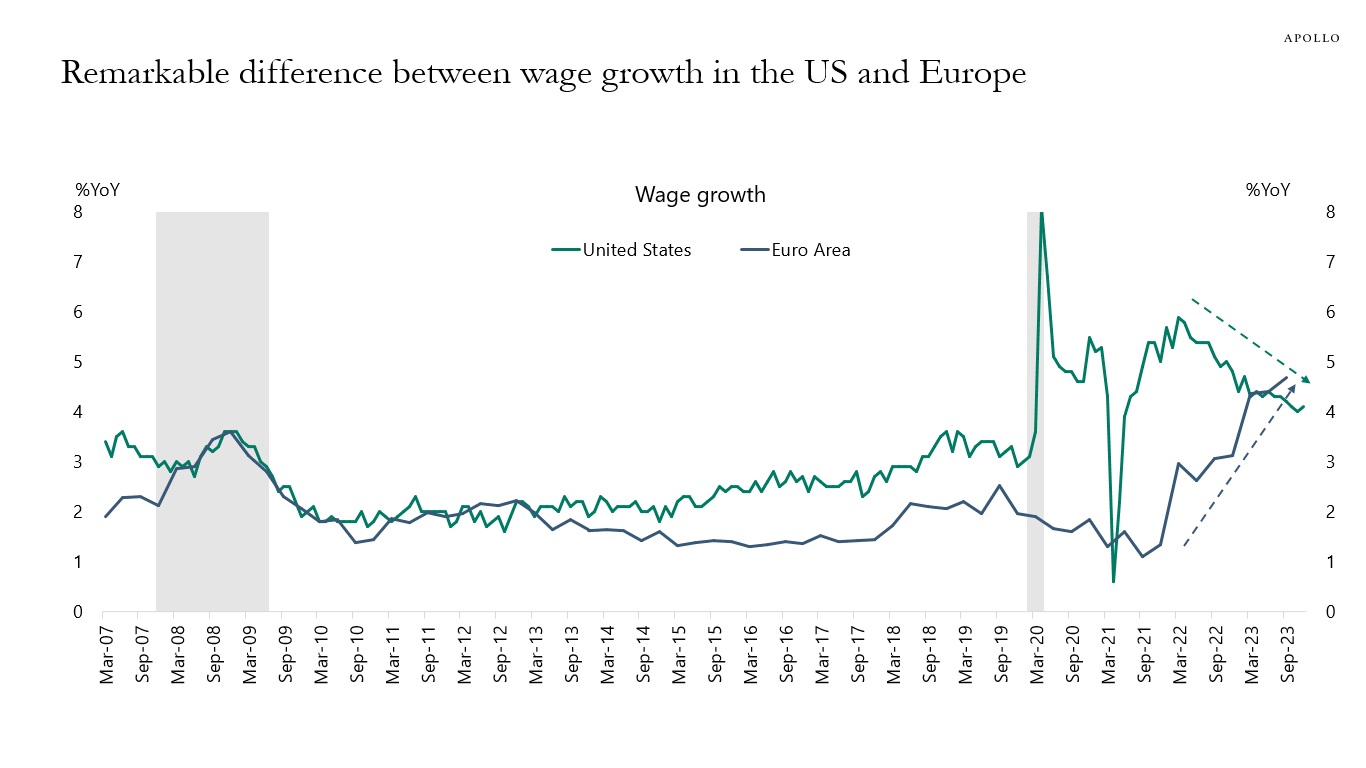
Source: BLS, ECB, Bloomberg, Apollo Chief Economist See important disclaimers at the bottom of the page.
-
Normally, 200 ships travel through the Suez Canal from south to north over a week, but that number has recently declined to 100, see the first chart.
For the Panama Canal, northbound traffic has also declined 50%, from 90 ships per week to 45, see the second chart.
The third chart shows that the price of transporting a container from Shanghai to Rotterdam has tripled.
The bottom line is that higher transportation costs are putting upward pressure on goods inflation.
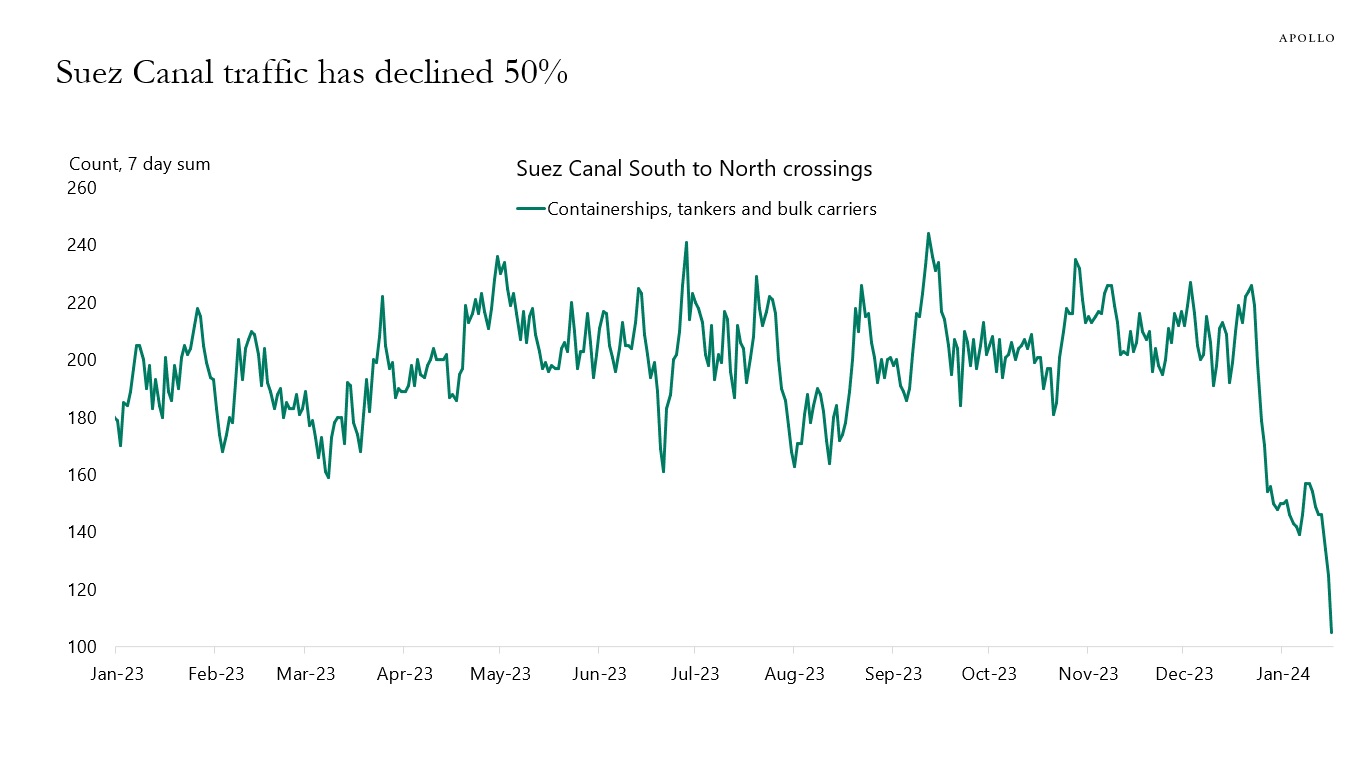
Source: Bloomberg, Apollo Chief Economist 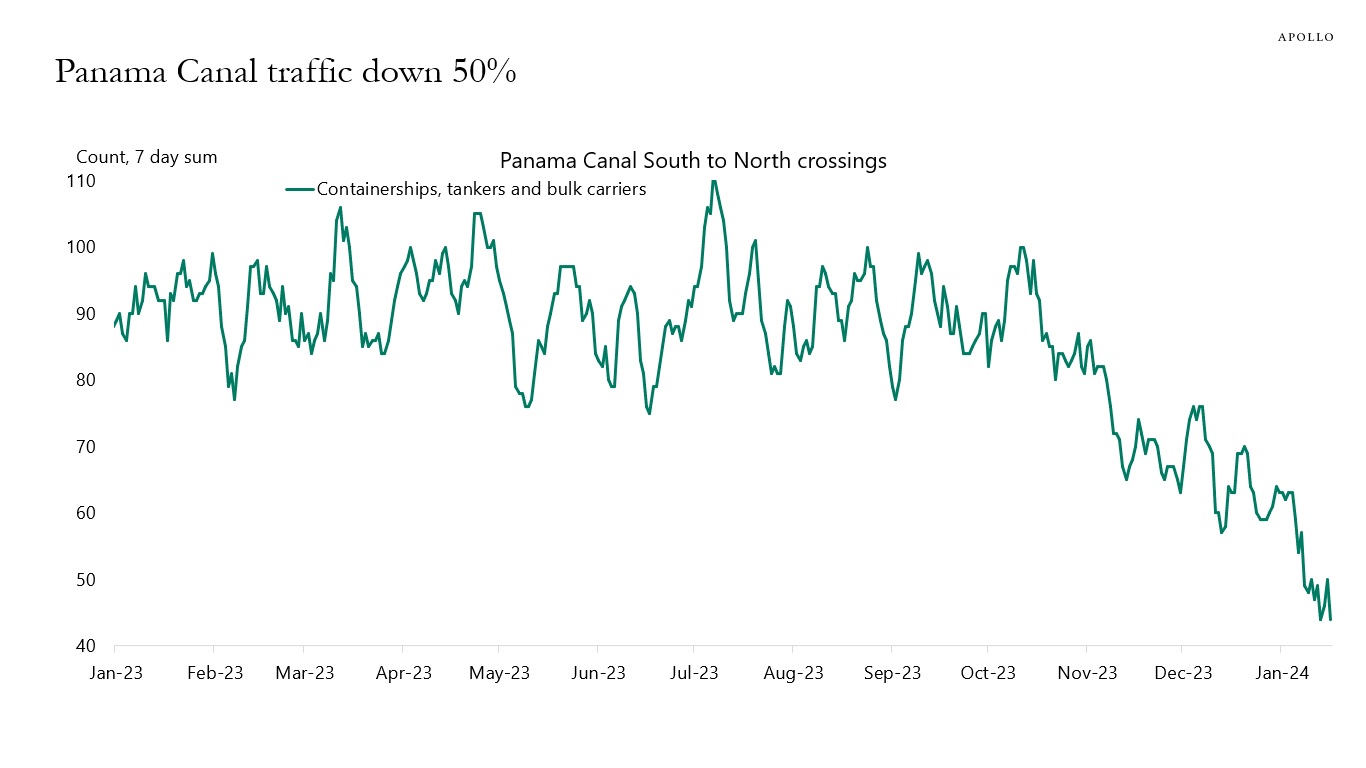
Source: Bloomberg, Apollo Chief Economist 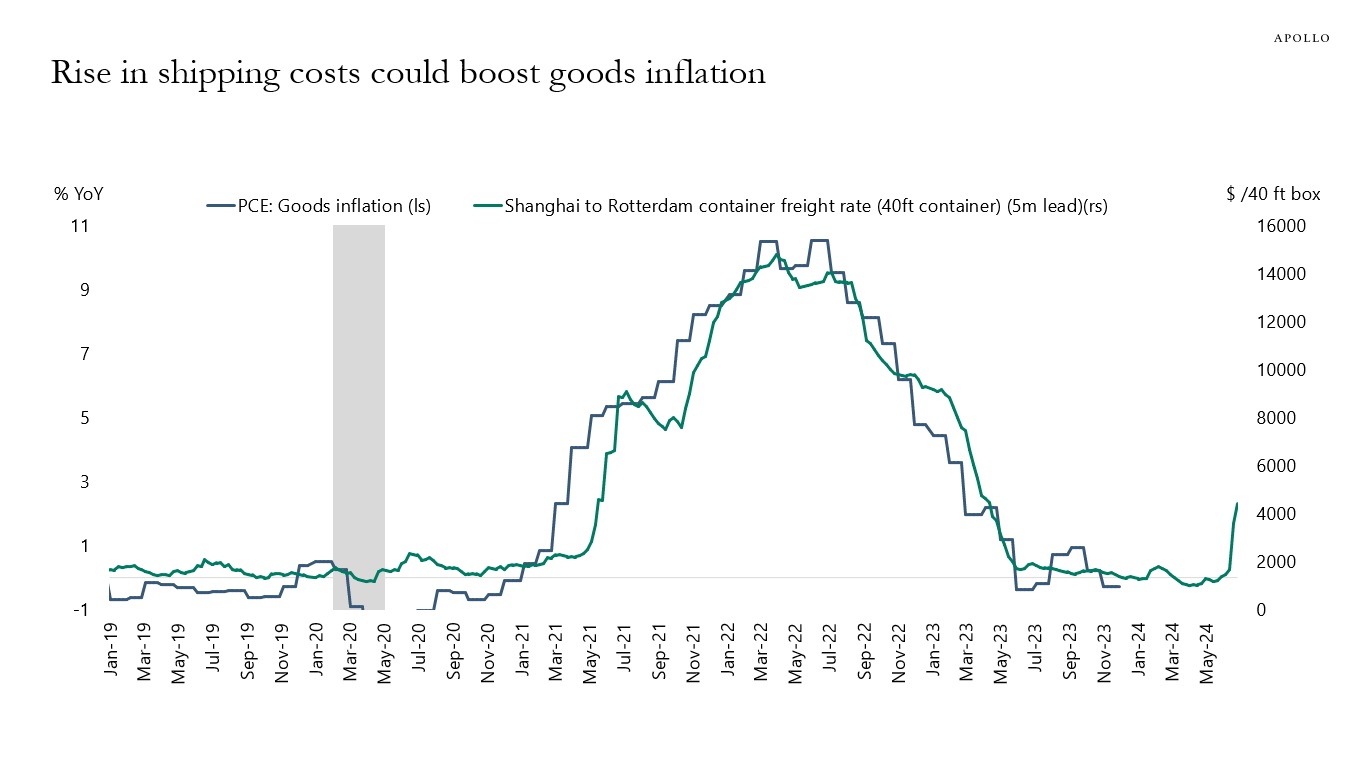
Source: BEA, Bloomberg, Apollo Chief Economist See important disclaimers at the bottom of the page.
-
The median age of repeat homebuyers has increased from 36 years old in 1980 to 58 years old in 2023, see chart below.
And the median age of first-time homebuyers has increased from 29 to 35 over the same period.
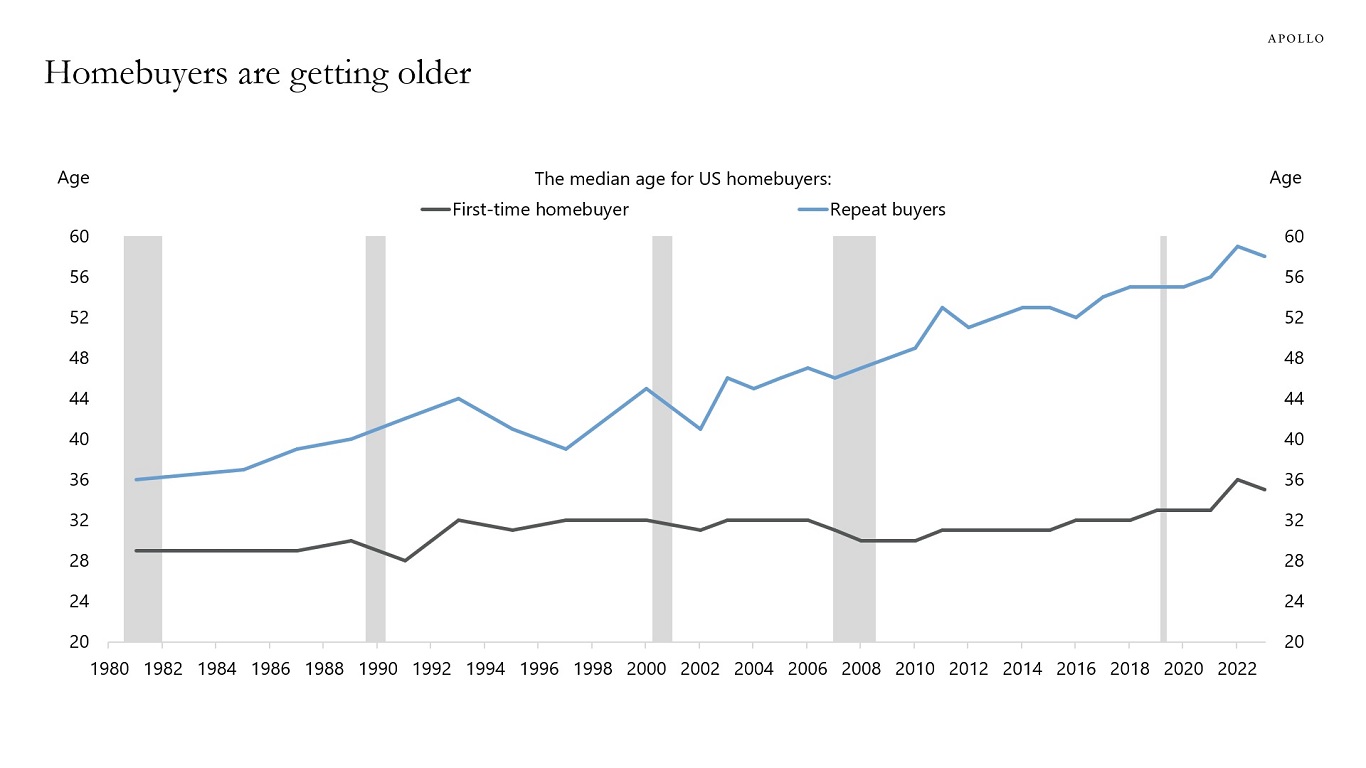
Source: NAR, Apollo Chief Economist See important disclaimers at the bottom of the page.
-
The Fed pivot has restarted the hunt for yield, see chart below. The question for markets is whether the associated rebound in housing, hiring, and capital markets activity will trigger a rebound in inflation.
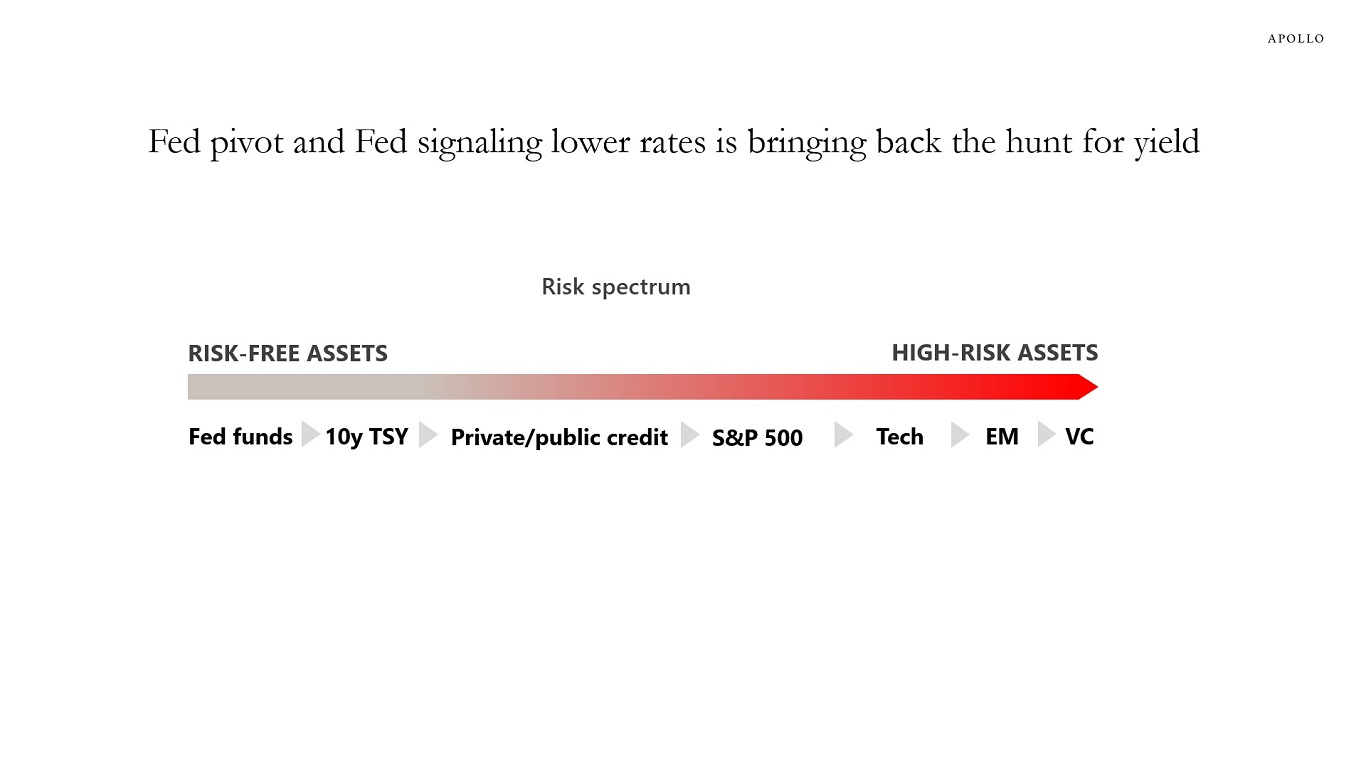
Source: Apollo Chief Economist See important disclaimers at the bottom of the page.
-
The story in markets in 2023 was that US growth expectations were first revised down and then revised up after the easing in financial conditions following SVB in March, see the first chart below.
With the significant easing in financial conditions since November, we are beginning to see the same pattern in 2024, see the second chart.
The performance has been different in Japan and Europe, where growth expectations have been steady in Japan and revised significantly lower in Europe.
In other words, the lack of a slowdown in 2023, which surprised the Fed, the consensus, and markets, was only a US story, and we are starting to see the same pattern play out again in 2024.
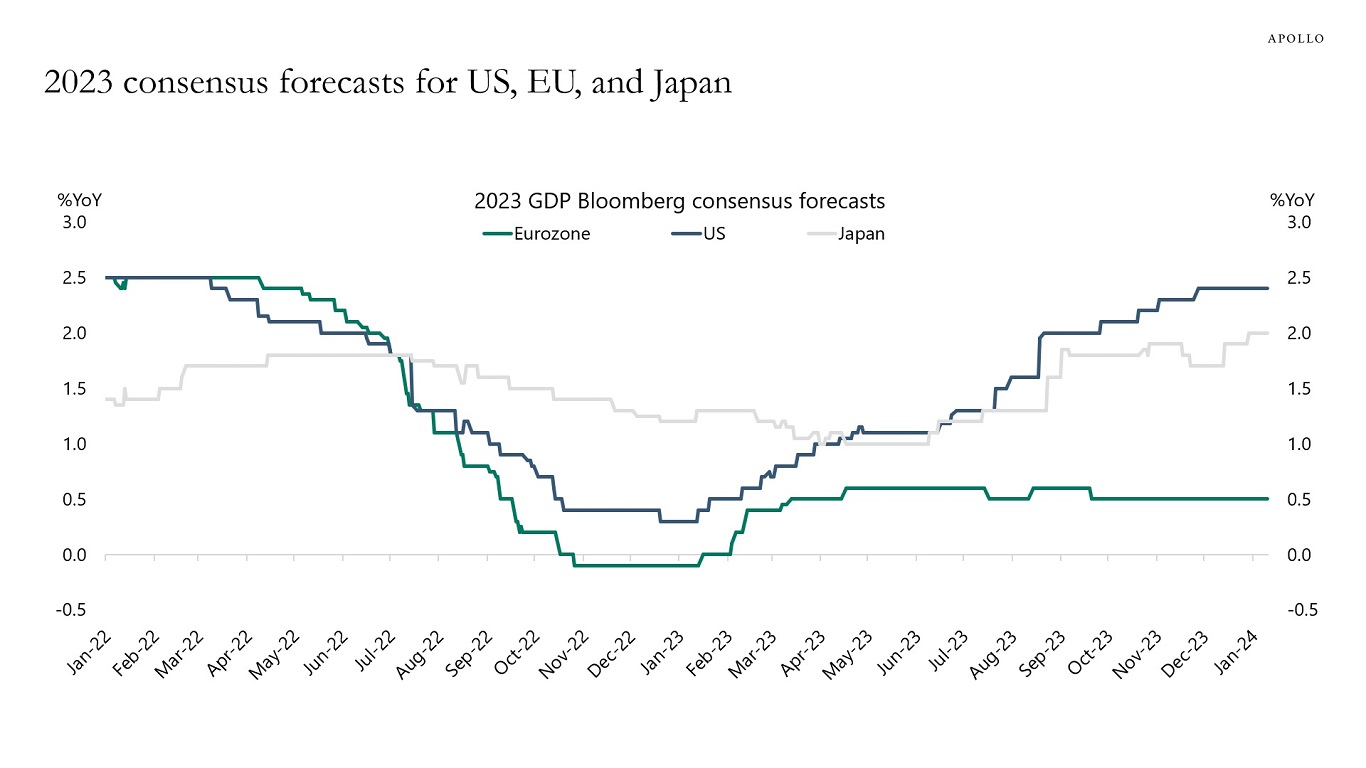
Source: Bloomberg, Apollo Chief Economist 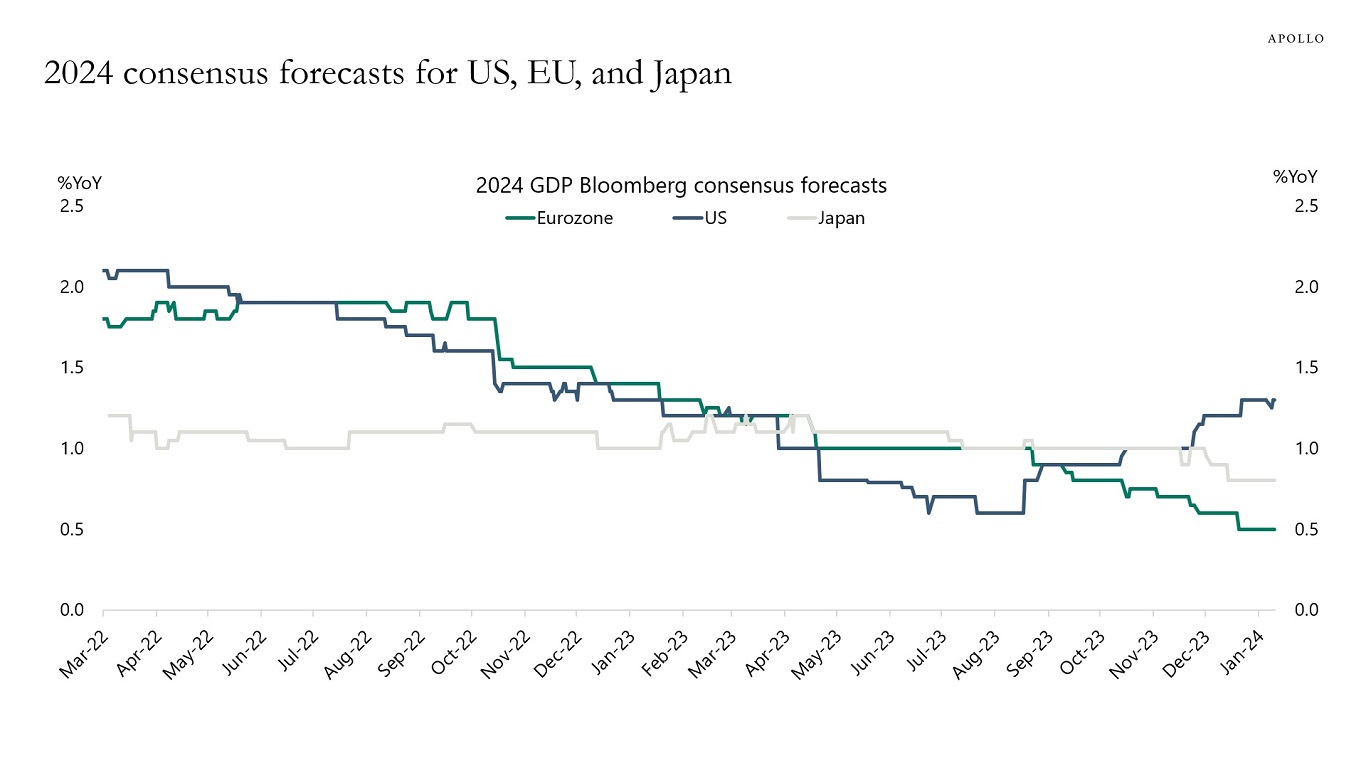
Source: Bloomberg, Apollo Chief Economist See important disclaimers at the bottom of the page.
-
The rally in rates and credit after the Fed pivot has pushed up the share of single-B and BB loans priced above par, see chart below.
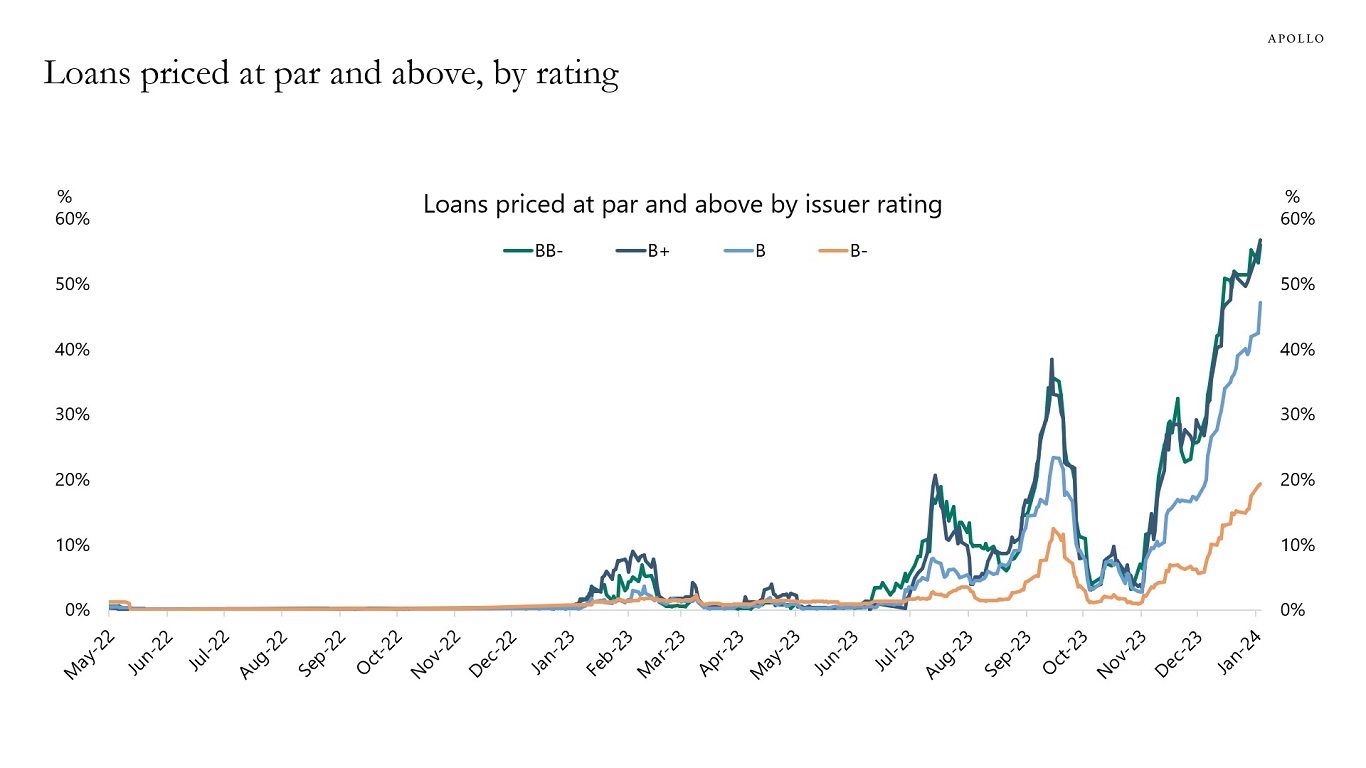
Source: Pitchbook LCD, Apollo Chief Economist See important disclaimers at the bottom of the page.
-
The ongoing easing of financial conditions continues to point to a reacceleration in growth over the coming months, see chart below.
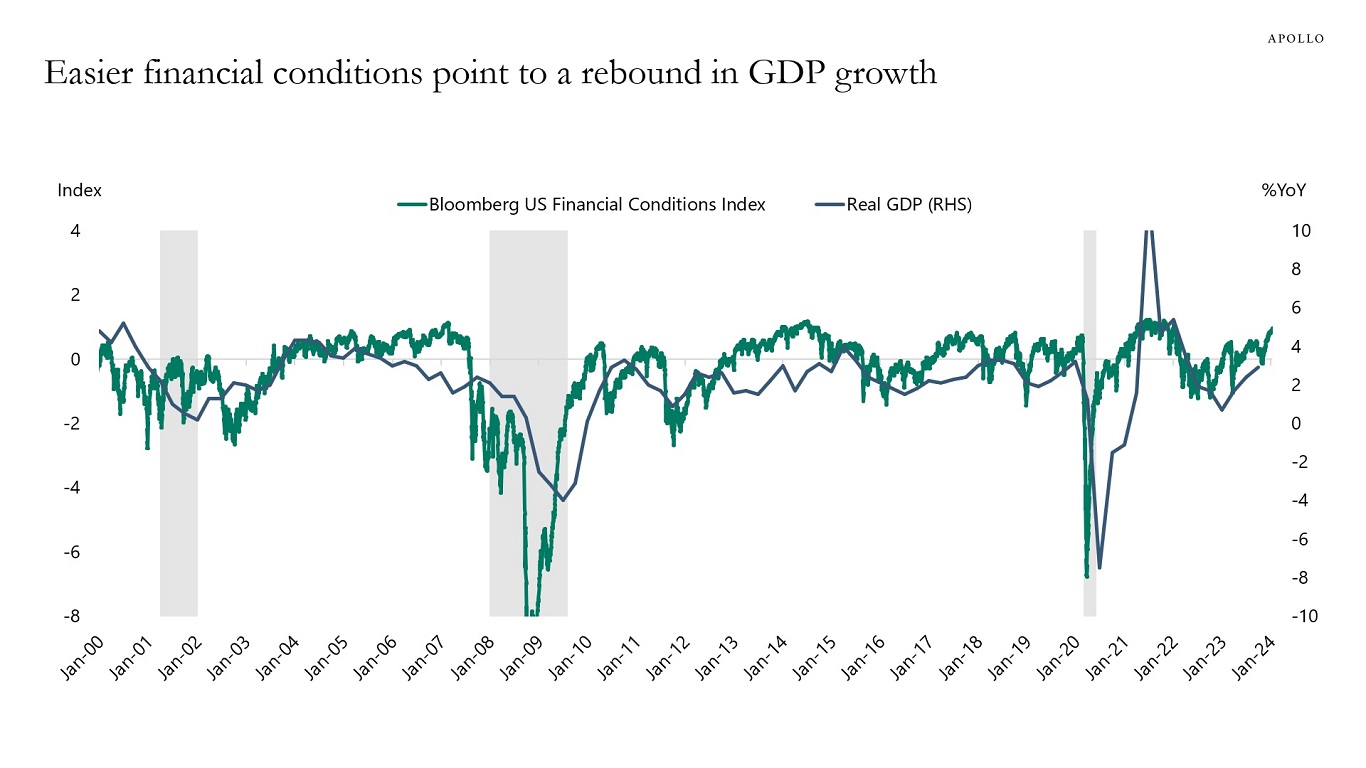
Source: BEA, Bloomberg, Apollo Chief Economist See important disclaimers at the bottom of the page.
-
Comparing the P/E ratio of the S&P 500 with the P/E ratio of the rest of the world shows a record difference, see chart below.
In other words, US equities have never been more expensive relative to international equities.
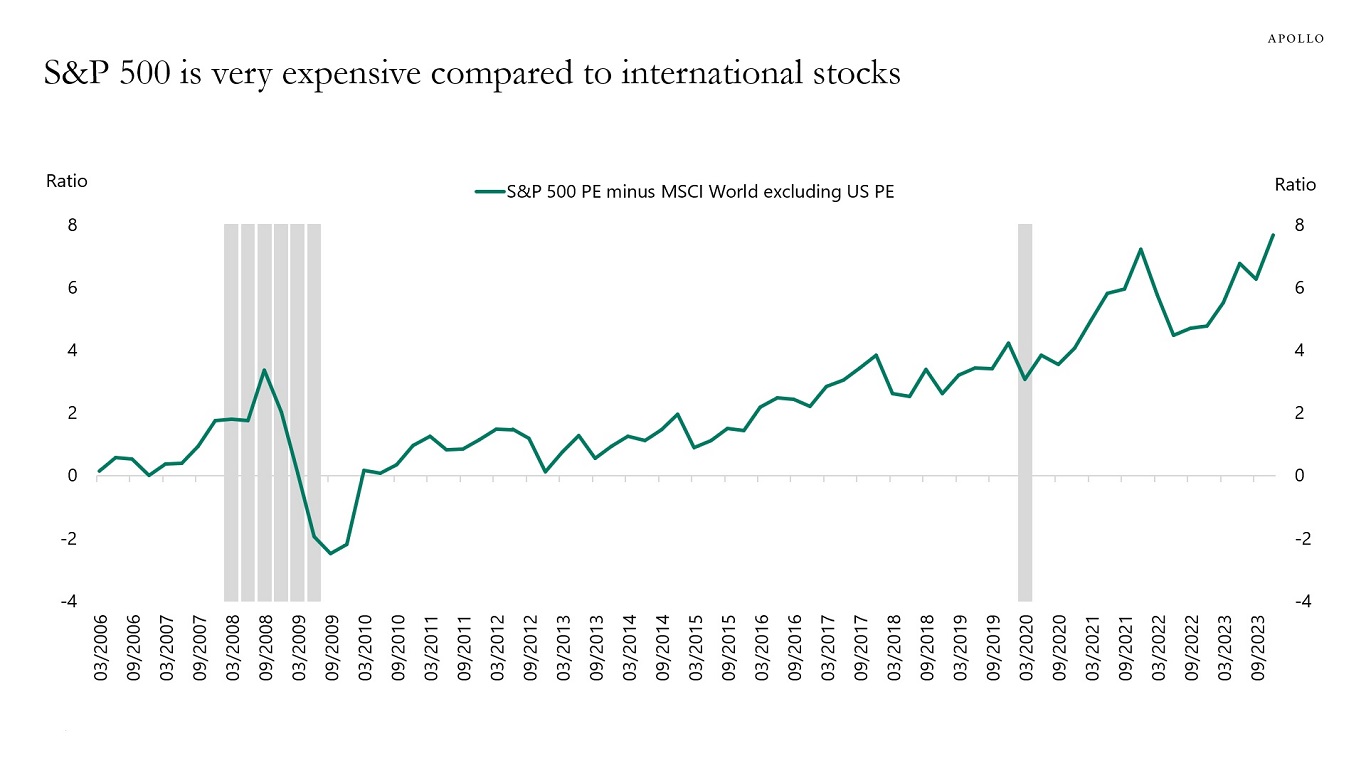
Source: Bloomberg, Apollo Chief Economist (Note: BEst PE ratio using 12-month forward earnings; BEst = Bloomberg estimates) See important disclaimers at the bottom of the page.
-
Since the Fed started raising rates in March 2022, the amount of money in money market funds has increased from $4.5 trillion to $6 trillion, see chart below.
With the Fed cutting rates over the coming quarters, we will likely see some of the $6 trillion leave overnight risk-free fixed income and flow into other asset classes such as equities, credit, and duration.
The record-high $6 trillion in money market accounts is likely a tailwind to equities, credit, and rates, and ultimately the economy—in particular hiring, housing, and inflation.
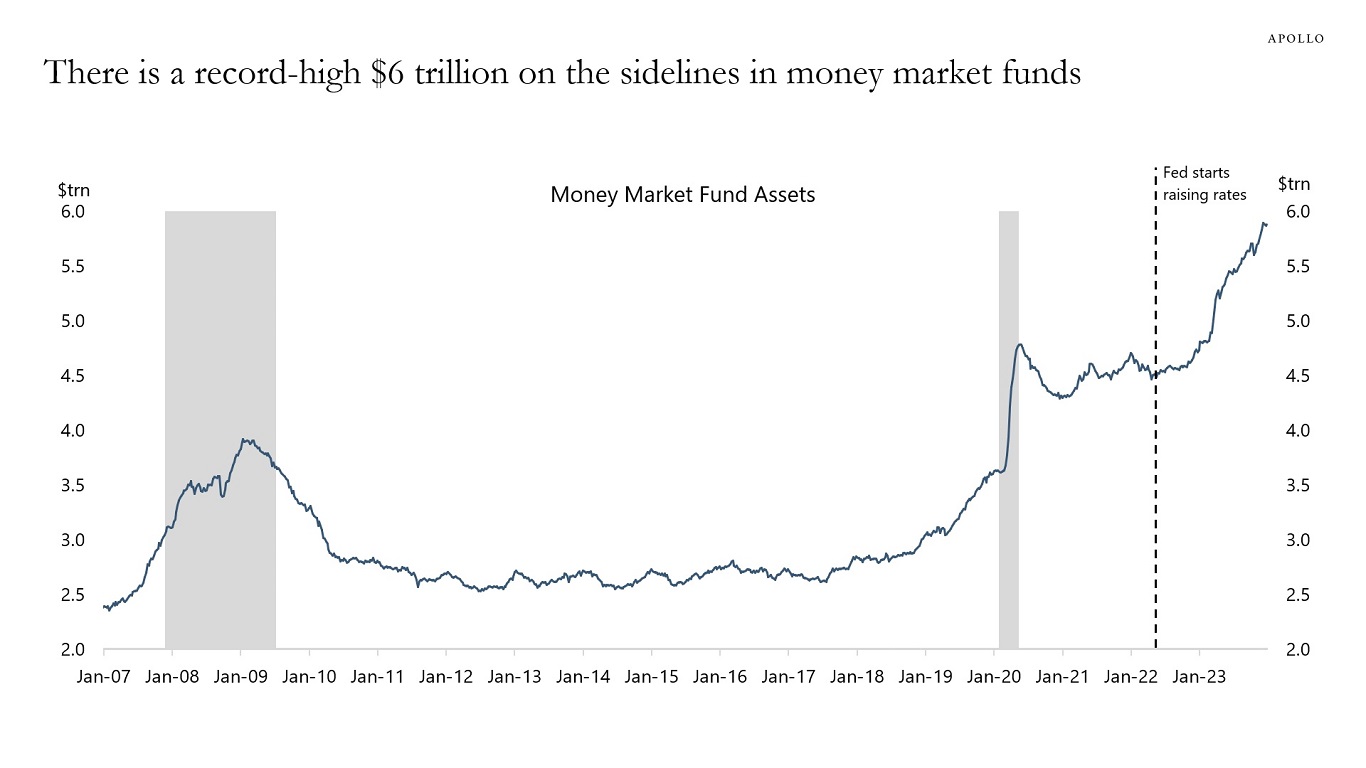
Source: Bloomberg, Apollo Chief Economist See important disclaimers at the bottom of the page.
-
Foreign-born employment in the US is back at the pre-pandemic trend, and native-born employment is still 6 million jobs below the pre-pandemic trend, see the first two charts below.
In other words, the post-Covid normalization in the labor force participation rate has mainly been driven by immigration.
At the same time, the number of retired individuals has remained on trend, see the third chart.
The bottom line is that even taking into account that about 1 million died from Covid, there are still around 5 million native-born workers missing.
These 5 million missing workers are the reason why the labor market is tight and why wage inflation is likely to remain elevated.
Put differently, there is still plenty of room for job growth.
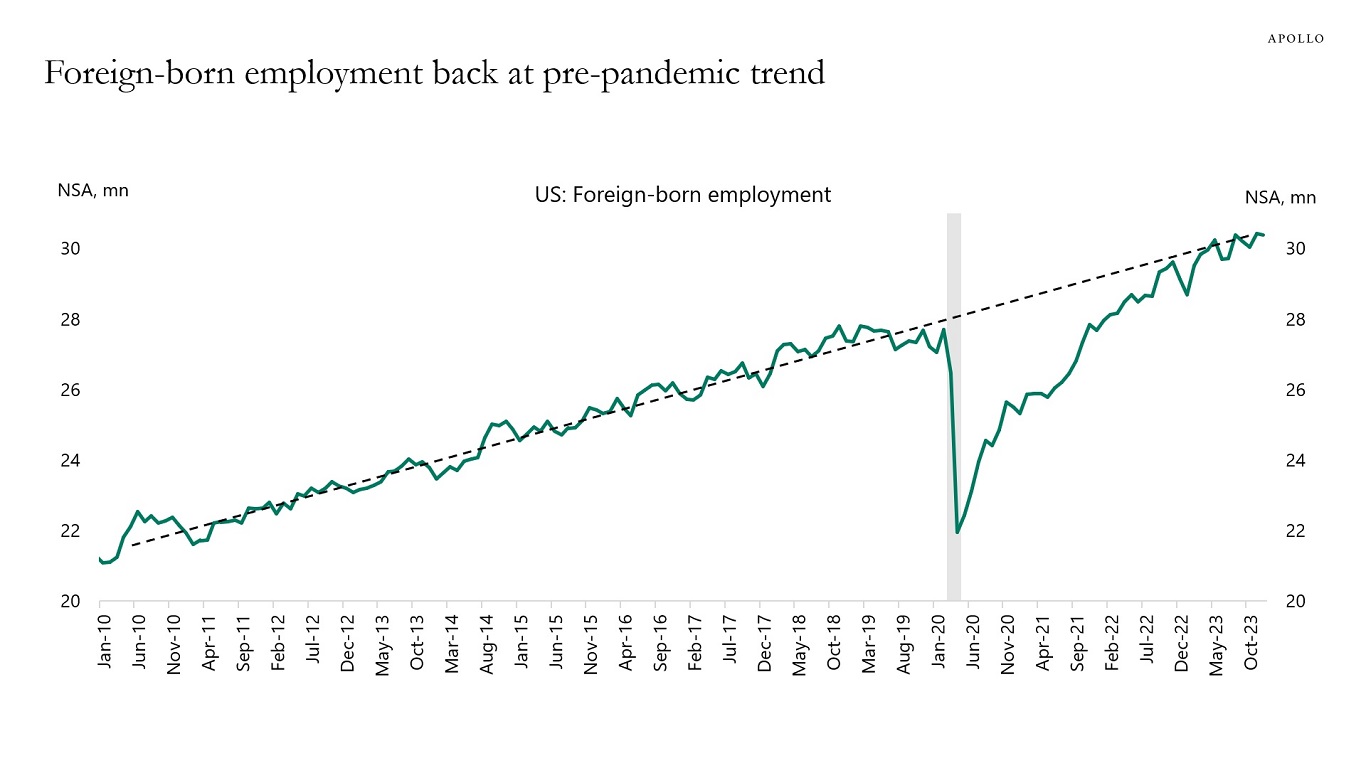
Source: BLS, Haver Analytics, Apollo Chief Economist 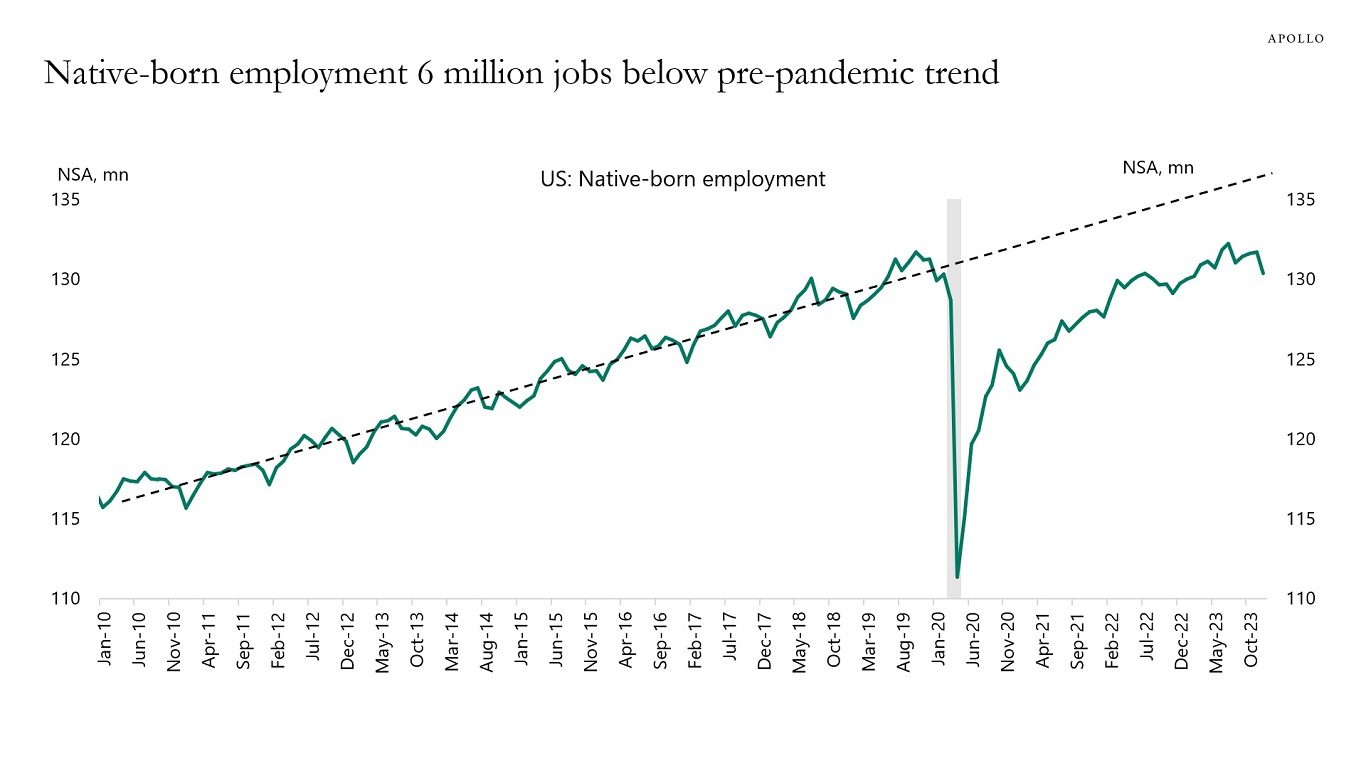
Source: BLS, Haver Analytics, Apollo Chief Economist 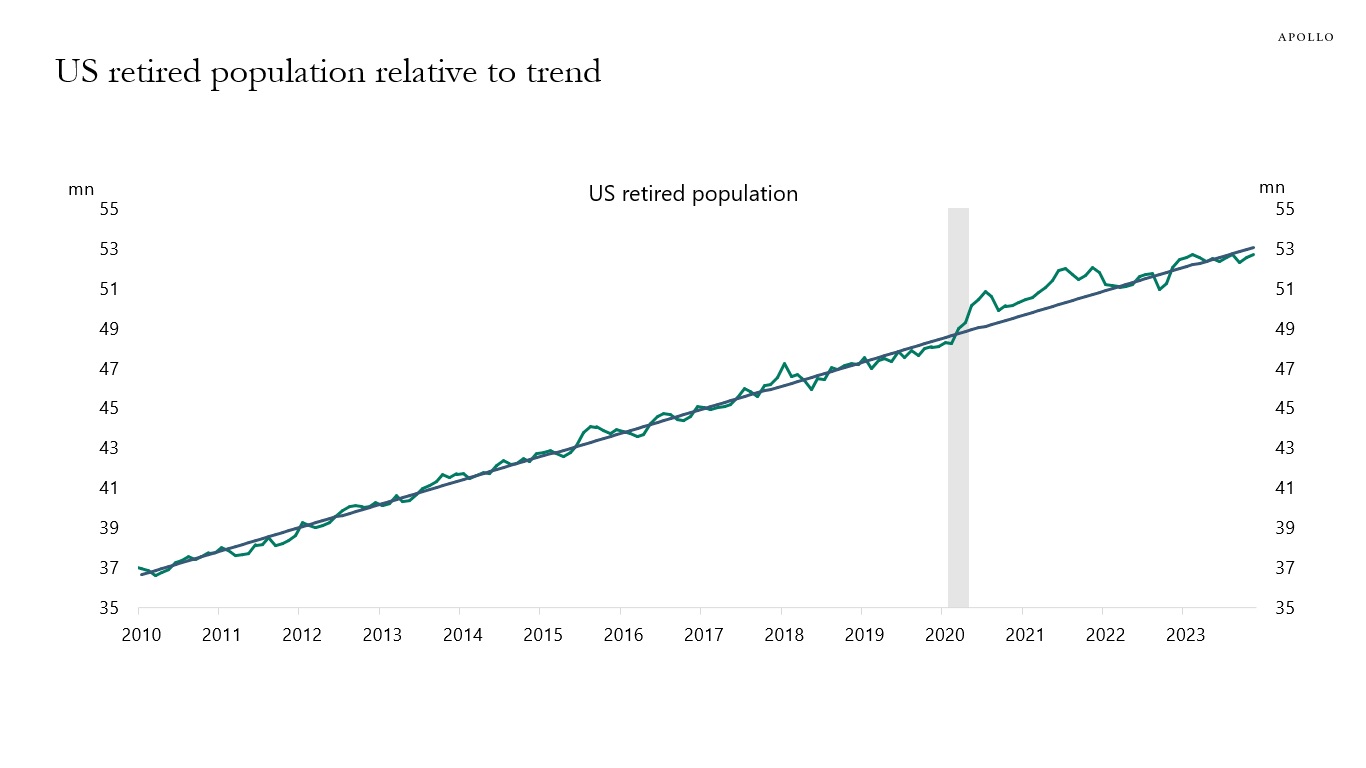
Source: Kansas City Fed, CPS IPUMS, Haver Analytics, Apollo Chief Economist See important disclaimers at the bottom of the page.
This presentation may not be distributed, transmitted or otherwise communicated to others in whole or in part without the express consent of Apollo Global Management, Inc. (together with its subsidiaries, “Apollo”).
Apollo makes no representation or warranty, expressed or implied, with respect to the accuracy, reasonableness, or completeness of any of the statements made during this presentation, including, but not limited to, statements obtained from third parties. Opinions, estimates and projections constitute the current judgment of the speaker as of the date indicated. They do not necessarily reflect the views and opinions of Apollo and are subject to change at any time without notice. Apollo does not have any responsibility to update this presentation to account for such changes. There can be no assurance that any trends discussed during this presentation will continue.
Statements made throughout this presentation are not intended to provide, and should not be relied upon for, accounting, legal or tax advice and do not constitute an investment recommendation or investment advice. Investors should make an independent investigation of the information discussed during this presentation, including consulting their tax, legal, accounting or other advisors about such information. Apollo does not act for you and is not responsible for providing you with the protections afforded to its clients. This presentation does not constitute an offer to sell, or the solicitation of an offer to buy, any security, product or service, including interest in any investment product or fund or account managed or advised by Apollo.
Certain statements made throughout this presentation may be “forward-looking” in nature. Due to various risks and uncertainties, actual events or results may differ materially from those reflected or contemplated in such forward-looking information. As such, undue reliance should not be placed on such statements. Forward-looking statements may be identified by the use of terminology including, but not limited to, “may”, “will”, “should”, “expect”, “anticipate”, “target”, “project”, “estimate”, “intend”, “continue” or “believe” or the negatives thereof or other variations thereon or comparable terminology.






